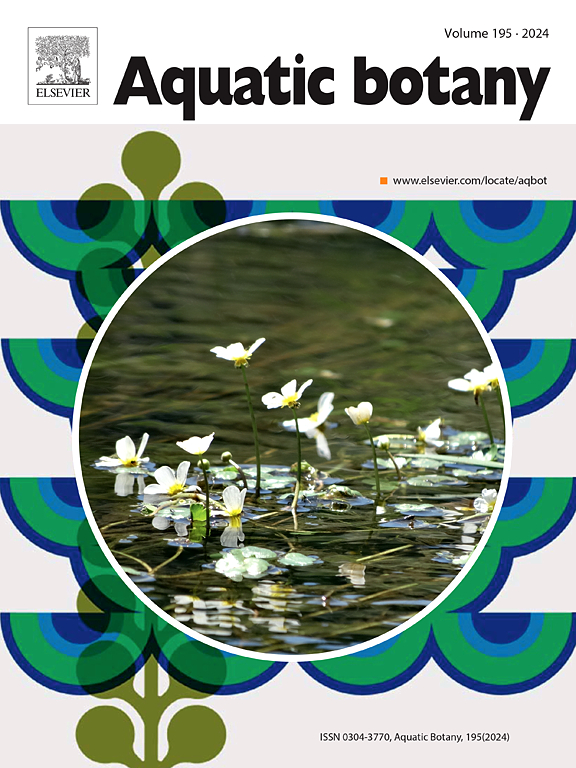Macrophyte species uniqueness is driven by habitat integrity, sediment structure, and spatial components in streams around the Amazon National Park
IF 2.6
4区 生物学
Q2 MARINE & FRESHWATER BIOLOGY
引用次数: 0
Abstract
Natural landscapes have been altered due to the increasing demand for natural resources, leading to changes in physicochemical characteristics and species composition of several systems, including the aquatic. This study identified the streams and species that contributed the most to macrophyte beta diversity within and surrounding the Amazon National Park. We also investigated the factors (local, spatial, and land-use) influencing the community structure. Biological and environmental data were obtained by field sampling in 29 streams (17 within the park and 12 outside). Land-use data were obtained by remote sensing (satellite imagery). The highest species contribution to beta diversity was observed in species with a high frequency of occurrence. The greater local contribution to beta diversity (LCBD) and the highest species richness were observed outside the park. Habitat integrity, fine substrate, and spatial components (i.e., geographic distance) negatively influenced LCBD, highlighting the effect of environmental filtering and dispersion processes on stream macrophytes. Land use variables did not significantly affect macrophytes LCBD. Our findings provide an important snapshot of how different factors (local, spatial, and land use changes) interact in determining macrophyte beta diversity in streams within and around the Amazon National Park. The study also underscores the importance of conservation units to preserve stream ecosystems' natural characteristics and habitat integrity.
亚马逊国家公园周围河流的生境完整性、沉积物结构和空间成分驱动了大型植物物种的独特性
由于对自然资源的需求不断增加,自然景观发生了变化,导致包括水生系统在内的几个系统的物理化学特征和物种组成发生了变化。这项研究确定了亚马逊国家公园内外对大型植物多样性贡献最大的河流和物种。我们还调查了影响群落结构的因素(地方、空间和土地利用)。通过对29条河流(17条在公园内,12条在公园外)进行实地采样,获得了生物和环境数据。土地利用数据是通过遥感(卫星图像)获得的。发生频率高的物种对β多样性的贡献最大。局地对β多样性(LCBD)的贡献最大,物种丰富度也最高。生境完整性、细基质和空间成分(即地理距离)对LCBD有负向影响,突出了环境过滤和分散过程对河流大型植物的影响。土地利用变量对大型植物LCBD影响不显著。我们的研究结果提供了一个重要的快照,说明不同因素(当地、空间和土地利用变化)如何相互作用,决定亚马逊国家公园内外溪流中大型植物的多样性。该研究还强调了保护单位对保护河流生态系统的自然特征和栖息地完整性的重要性。
本文章由计算机程序翻译,如有差异,请以英文原文为准。
求助全文
约1分钟内获得全文
求助全文
来源期刊

Aquatic Botany
生物-海洋与淡水生物学
CiteScore
3.80
自引率
5.60%
发文量
70
审稿时长
6 months
期刊介绍:
Aquatic Botany offers a platform for papers relevant to a broad international readership on fundamental and applied aspects of marine and freshwater macroscopic plants in a context of ecology or environmental biology. This includes molecular, biochemical and physiological aspects of macroscopic aquatic plants as well as the classification, structure, function, dynamics and ecological interactions in plant-dominated aquatic communities and ecosystems. It is an outlet for papers dealing with research on the consequences of disturbance and stressors (e.g. environmental fluctuations and climate change, pollution, grazing and pathogens), use and management of aquatic plants (plant production and decomposition, commercial harvest, plant control) and the conservation of aquatic plant communities (breeding, transplantation and restoration). Specialized publications on certain rare taxa or papers on aquatic macroscopic plants from under-represented regions in the world can also find their place, subject to editor evaluation. Studies on fungi or microalgae will remain outside the scope of Aquatic Botany.
 求助内容:
求助内容: 应助结果提醒方式:
应助结果提醒方式:


